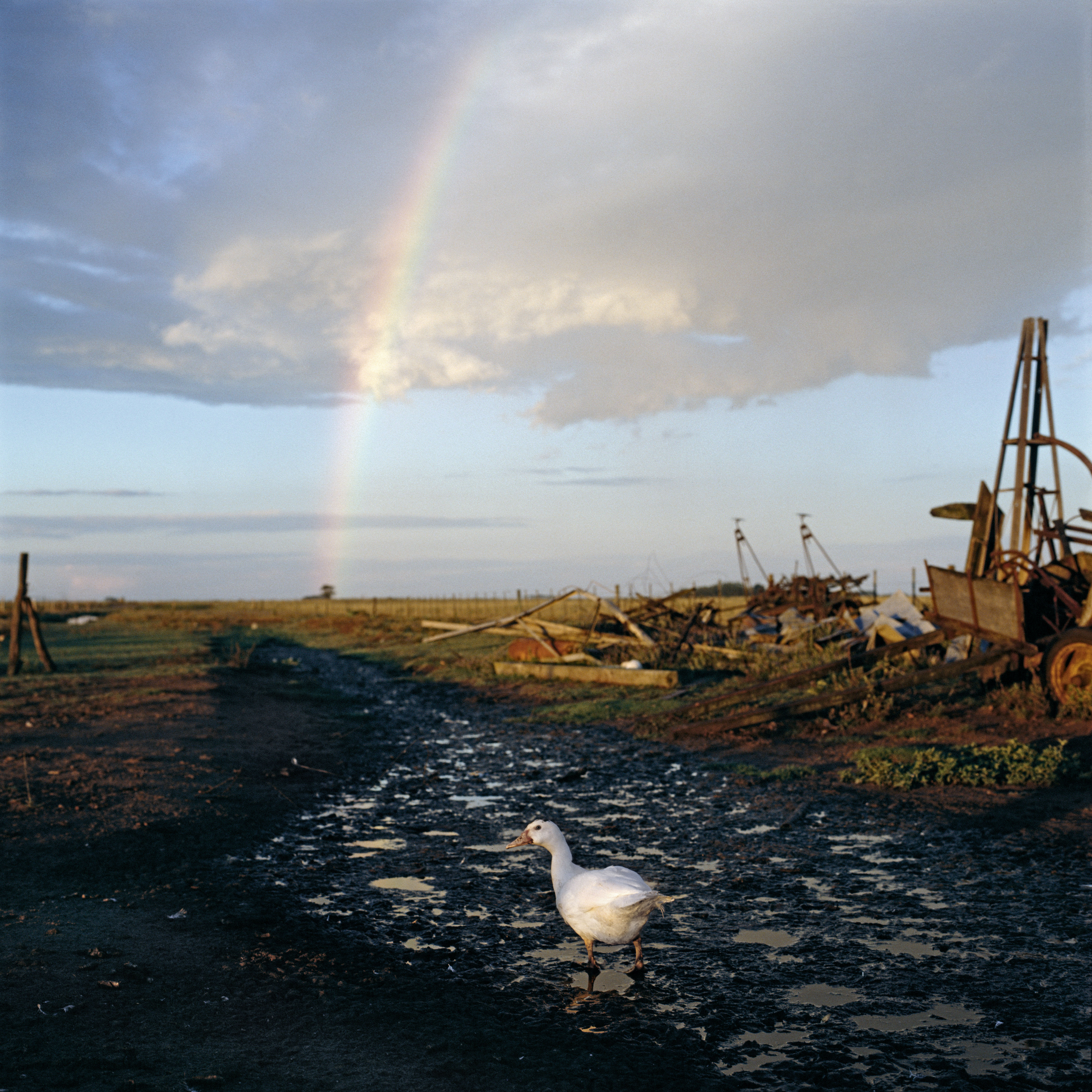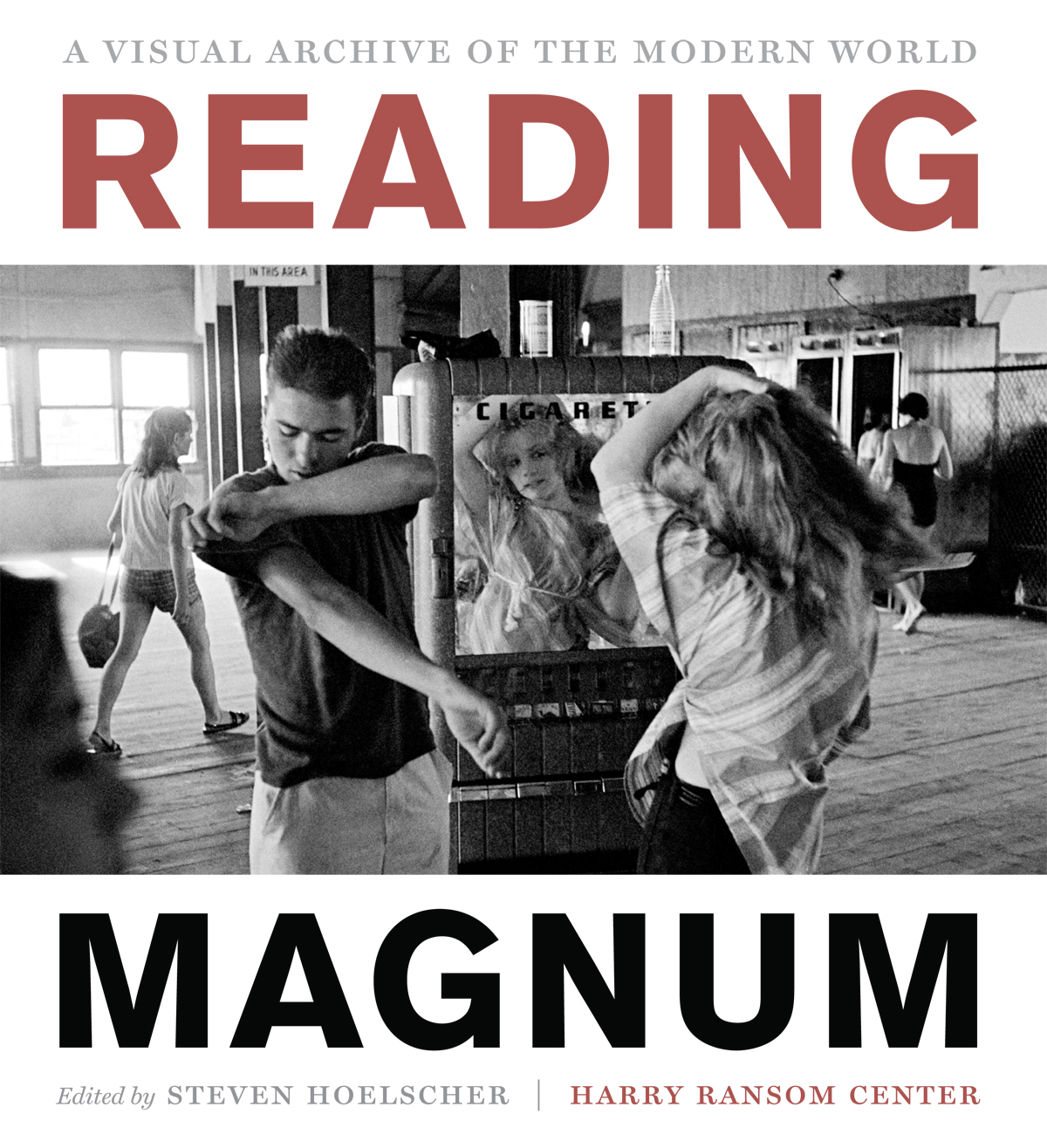Between May 9 and May 13, roughly two dozen photographers will make the Ransom Center their home base for an intensive week of photographic study and practice. Some will be coming from Texas, while others will come from [Read more…] about “Good photography looks backward and forward at once”: Ransom Center hosts Magnum Photos workshop
Magnum Photos
Fellows Find: The ‘most wonderful’ images in an album of 19th-century photos of a fishing village in Glasgow
Sara Stevenson, a senior research fellow at the University of Glasgow, worked with the photographs of David Octavius Hill and Robert Adamson at the Ransom Center last fall. Her research, supported by the David Douglas Duncan Endowment for Photojournalism, will be used in a book she is writing for the J. Paul Getty Museum. Below, she shares some of her findings. The Ransom Center is celebrating the25th anniversary of its fellowship program in 2014–2015.
In October 2013, I visited the Harry Ransom Center’s magnificent library, which holds impressive historic photographs and contains one treasure of particular Scottish importance: the album of photographs by David Octavius Hill and Robert Adamson taken between 1843 and 1846. Hill gave this set of photographs to marine painter Clarkson Stanfield, and Stanfield responded: “I sat up till nearly three o’clock looking over them. They are indeed most wonderful, and I would rather have a set of them than the finest Rembrandts I ever saw”—a remarkable, heartfelt statement.
The photographs were taken mostly in the fishing village of Newhaven, just to the north of Edinburgh on the river Forth. They are the origin of social documentary photography. This, I am happy to say, ought to have been impossible, because the process they used, the calotype, was far too slow; exposure times might well be measured in minutes rather than fractions of a second. The series—more than 100 photographs involving several hundred figures—is a highly pleasing example of human intelligence and skill, both using and overcoming the incompetence of technology. Social documentary photography is, to my mind, a high art form, demanding a sophisticated understanding of people—how to work with other people to make them appear to be themselves, in an active or powerful sense that speaks to strangers and, in this case, does so after more than 150 years. This is in no way easy— “most wonderful” indeed.
The new research I am unearthing on this subject is due to be published by the J. Paul Getty Museum publications department in a year or two. The book will be a celebration, engaging both collections. I am more than grateful to have the endorsement of two such splendid American photographic departments of a great Scottish achievement in the art of photography.
By happy coincidence, the fellowship was founded in honor of the excellent photojournalist, David Douglas Duncan, whose splendid archive resides at the Center. It was enjoyable to work in the library with fine examples of his work on the wall, which connected me to the present. It was equally astonishing to find that the Center was staging a conference to celebrate the acquisition of the New York Magnum Photos archive and that they had persuaded such an impressive group of photographers to come, show photographs, and talk. I am still haunted by some of the pictures and was immensely cheered to listen to people talking with passion of their work and aims.
The Center offers a generous and helpful environment for intelligent work.
And I enjoyed Austin (not least because the sun shines, with only an occasional dramatic thunderstorm—and coming from Scotland at the dull, wet time of the year, this is a serious consideration!)
Image: David Octavius Hill & Robert Adamson. A Newhaven Pilot. 1845.
Editor of “Reading Magnum” explores Magnum Photos collection
Steven Hoelscher, editor of Reading Magnum: A Visual Archive of the Modern World, will discuss the book at The Contemporary Austin tonight in an event hosted by Austin Center for Photography, University of Texas Press, and The Contemporary.
The arrival in December 2009 of some 200,000 press prints from Magnum Photos’s New York bureau represented a remarkable opportunity for scholarship—and a substantial challenge. Although Magnum’s photographers had received considerable individual attention and lavish coffee table books have reproduced their iconic images, no scholarly work to date had assessed the photo agency’s visual archive. Important retrospectives have been published, but their textual brevity and the fact that the photo agency itself produced them suggested the opportunity for a critical, independent study.
Thus, the time seemed ripe to dig into the collection, to see what’s there, and to consider how the photographs fit into a larger cultural history. Here, of course, is where the challenge arises. How to approach the photo collection? What sort of organizational frameworks would seem to be most appropriate? What should the resulting publication look like? I spent roughly six months combing through the 1,300 archival boxes to find answers to these questions.
During this preliminary research, several things occurred to me. First, while nearly limitless possibilities of scholarly frameworks existed, a half dozen themes kept emerging as I studied the contents of the archival boxes. War and conflict, of course, was important, but so too was portraiture and geography. What’s more, cultural life, social relations, and globalization stood out as recurring themes.
Second, it became immediately evident that three years would not be nearly long enough for me alone to take on such a project, and it was always my intention for the volume to be published in conjunction with the current exhibition Radical Transformation: Magnum Photos into the Digital Age, which was curated by Jessica S. McDonald and Roy Flukinger. The book would necessarily be one of collaboration. Here, I was fortunate to be joined by seven distinguished scholars for this project. They are trained in a range of academic fields—art history, journalism, literature, cultural history, geography, cultural studies, communications, and visual studies—for the simple reason that no one perspective can adequately encompass the Magnum archive’s reaches. Each contributor spent considerable time with the collection at the Ransom Center, and each brings his or her unique point of view to the collection’s materials.
What each chapter shares is a concern for historical and cultural context that is so often missing when photographs are disconnected from their original settings.
Finally, I wanted the book to reflect the dual nature of photographs: that they were both physical objects and the bearers of compelling imagery. With this in mind, two sets of works—bookends, if you will—surround each chapter. I included a set of “Notes form the Archive,” which emphasizes the materiality of the photograph and traces its trajectory, from annotated press prints to distribution to eventual publication. A “Portfolio” then follows each chapter, illustrating something of the depth and range of the images carried by a photograph.
Putting this book together has been a real labor of intellectual love. The deeper I dug into the Magnum Photos collection, the more impressed I was by the depth, range, and artistry of the contents. It’s my hope that Reading Magnum reflects something of the collection’s power.


